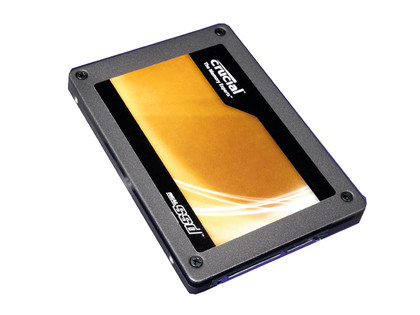It's an oft-overlooked option but upgrading a laptop hard drive will reap greater performance rewards than you might think. In fact, it could be the solution to two big problems we have with using laptops.
The first of these problems is that laptops only have one drive bay and using external storage means you've got to get up out of your comfy, warm chair (the one with the perfect buttprint) just because you've left the USB cable upstairs. The second problem is that once you start running out of space you can find the drive is moving about as fast as a pensioner browsing a supermarket meat counter.
At this point, the thought of a drive upgrade might fire in those neurons. Most laptops ship with what we might describe as a 'British Rail' class of drive, when you're after 'Deutsche Bahn'-style service.
Smaller capacity 5,400rpm drives are never going to perform anywhere near as well as the upgrade alternatives. The most obvious pick would be an SSD: 64GB models are now available under the magic £100 mark, with 128GB versions under £150.

While we're not here to extol the virtues or pitfalls of these devices, we are here to try and see where best you'd be spending your hard-earned, recession-weary money. Would a faster but lower-capacity 7,200rpm drive be ideal? How about a larger but slower 5,400rpm drive? Or as a further option, should you choose a hybrid drive that packs flash-memory for the best of both worlds?
All of these spinning disk options come in under the £90 mark, making the question of which is best for you a tough one to answer. Even if you already know you want capacity, thus ruling out the SSD option, two drives here are 500GB and the Toshiba is a massive 1TB.
With 2.5-inch drives, simply opting for a larger capacity drive will increase performance, as the 'areal data density' of the platter means more data can be read and written per second on a disk that spins at the same speed.
Get daily insight, inspiration and deals in your inbox
Sign up for breaking news, reviews, opinion, top tech deals, and more.
That neatly brings in the second way of boosting drive performance; just make it spin faster. Unfortunately that introduces its own set of problems.
Firstly, reading the magnetic field at that speed becomes increasingly difficult, so you need to start reducing the data density for reliability.
Getting warmer
Increasing speeds to 10,000 or 15,000rpm is possible but this introduces heat and these 2.5-inch devices are designed only for servers that can provide adequate cooling. So are the options a slower, more efficient but larger 5,400rpm drive or a faster, less efficient but lower capacity 7,200rpm drive?
Well, there is a third way that drives can help improve performance: by utilising a data cache. Desktop drives can get away with 32MB and 64MB-sized cache while the physically far smaller 2.5-inch drives top out at 16MB, or more commonly 8MB, which is a fraction of the total capacity size but can help smooth out performance on more complex write scenarios.
This does also overlap with the option of hybrid devices, of which we have the Seagate Momentus XT.
Current page: Upgrade your laptop for gaming: storage
Prev Page Upgrade your laptop for gaming: better graphics